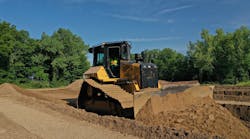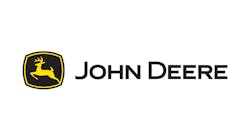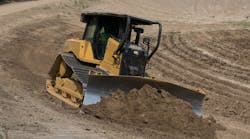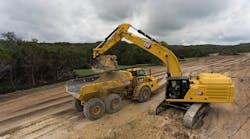Nowadays, we call them the good old days. You remember – when jobs were predominately straight forward, and practically all job site problems could be cured with simple, common sense solutions formulated in the field.
But it wasn’t so long ago – the time before machine control changed the way contractors, engineers and surveyors looked, figured and bid construction jobs. And, honestly, the good old days, when compared to operations and profit margins enhanced due to technology, weren’t all that good.
Although the basic big iron rig hasn’t changed much in the past decade – all still have motors and alternators and hydraulic systems (even if the systems and technological whiz-bangs are changing as fast as the industry) – there’s massive change in the air.
Change: The very word can provoke fear and uncertainty in the hearts and minds of the most competent contractors, engineers and surveyors. What’s it going to take to encourage more and more jobsite professionals to get up to speed on the technological changes before they get left behind?
Has technology advanced so far that it’s hard to understand the science of precision positioning on the job site? Due to the rapid changes in regard to machine operation and positioning, today there are basically three types of contractors:
- those that jumped in the fast-moving stream of technology with both feet, betting their economic future on technology;
- those that are testing the water, slowly, checking out various systems on various pieces of machinery to see if the public relations hype from manufacturers is even half as good as the claims; and
- those still sitting on the sidelines and asking themselves for the hundredth time, "Is now the right time to invest in machine control? Tomorrow? Next week? Next year?"
How does a contractor – large or small – know when it’s the right time to invest, the right time to switch from the known to the unknown, from systems that have worked to ones that supposedly work better?
When you read about all the new machine control solutions, the number of satellites assisting Contractor A or Engineer B or Surveyor C in performing twice the work in half the time, it’s a simple task to transform what you read into how the technology would benefit your own individual operation. But that’s the dilemma for many contractors: Can I believe what I read? Does this technology really make that much difference? Will it help me save time and drop more money to my bottom line?
Answering Those Questions
Learn all you can about machine control systems and how they can mesh with your current and projected performance and expectations; also, find out what other contractors say about their investment in advanced technology. Learning new information is never a bad thing.
Information about precise positioning systems for every piece of construction equipment and every phase of job site management is readily available online from manufacturers, instrument and equipment reviews, and from local dealers for various manufacturers.
To understand the basics of machine control, you need to know what an indicate system is. With an indicate system, a machine operator has in-cab "help" that provides guidance in positioning the cutting edge of the blade in direct reference to the desired grade.
In indicate operation, the operator is still "hands-on" with maneuvering the blade, but doesn’t have to interpret grade stakes to perform tasks. Automatic systems, on the other hand, control the cutting edge in perfect concert with the site design surface. The operator does not have to maneuver the blade; the software, electronics and hydraulics interpret the site’s design data and operate independently.
Many contractors opt to get their "feet wet" in machine control technology by starting off with relatively inexpensive indicate systems. It’s a rather simple procedure to later upgrade indicate systems to full machine control by adding hydraulic valves and other components. Many contractors use a combination of systems – 2-D on Machines A and B, 3-D on Machines C and D – or systems that easily switch from indicate to fully automatic. It’s becoming more commonplace for contractors to use indicate systems for moving "big" dirt (mainly reserved for scrapers and big dozers); this method allows the operator to move at a relatively fast pace. After the required dirt is moved, dozers and motor graders running fully automatic systems are used to bring targeted areas within specified guidelines – as accurate as millimeter tolerances.
Learning and understanding the basic principles of equipment automation can be daunting for those that don’t want to seek out and accept information that may lead to positive change on a personal and professional basis. Here is a brief primer providing basic information about machine control, its functions, and its bits and pieces.
Moving Parts, Machine Interface, Hydraulics
The system of a machine that physically moves different parts of heavy equipment on a job site is hydraulic cylinders that work just as cylinders do on any machine. The piston is connected to the part, such as a blade, by a mechanical linkage. Multiple cylinders are used when the part needs to be rotated on its horizontal and vertical axis, as well as up and down.
Hydraulics create the energy needed to move parts on heavy machinery accurately … and quickly. Hydraulics use fluid under extreme pressure to create a much greater force to pump a non-compressible fluid into a small cylinder under high pressure, creating a mechanical force many times greater than simple mechanical links.
Advancement of machine control systems has quickly followed the development of innovative hydraulic valve technology. As the hydraulic valves became capable of more and more precise movement, that technology made possible advancements in machine control.
The operation of valves is controlled by in-cab levers through an electrical connection. Hydraulics are standard OEM equipment. It is becoming more and more popular to install automated grade control systems (which might require additional valves and other equipment) either at the factory or before the customer takes delivery.
In-Cab Operation
While in the future there will assuredly be construction sites with machines slaved to a complete computer system – no operator – today’s technology provides a visual display in the cab of the machine. An indicate system provides the operator with illuminated dots or arrows. The lights or arrows indicate when the blade is above, below or on grade.
Simple, to the Point, and Effective Within Acceptable Grade Tolerances
On an automatic system, a control box serves as the primary operations center for a machine control system. It is connected to valves located on the machine by cables. Switches, located on the machine’s control levers, enable the operator to change from manual to automatic mode without removing hands from the controls.
An onboard computer with operating software in the control box processes information from input devices and sends signals to control the hydraulic valves. Advanced control boxes, like Topcon’s GX-60, have a color touch-screen display that provides visual information to the operator and enables him or her to set and adjust system functions. The operator can choose between plan view, section view and profile view – or choose a split-screen option that allows up to three views simultaneously.
Sensors: Sonic, Laser, GPS … and More
Sensors are devices that provide positioning input to the control box. Until recently there were three different kinds of sensor commonly used for machine control applications – sonic, laser and GPS.
A sonic sensor measures distance with sound waves, controlling grade from an existing physical feature – a road surface, a concrete curb or a stringline. A component in the sensor generates sound pulses and picks up return echoes – not unlike the maneuvering mechanism found in bats and porpoises. It then sends position information to the control box for elevation adjustments. Sonic sensors are generally used to cut or place material with pavers, milling machines, trimmers, and motor graders.
Laser sensors don’t require continuous reference to physical objects. A rotating laser transmitter sends elevation control information in a uniform plane that provides 360-degree coverage. Laser-indicate systems have been a popular starting point for contractors needing grade control. Hydraulic valves can be added at a later date for automatic control. Laser control systems have been widely used for many years to fine grade areas like building pads and athletic field surfaces with minimal slope. The major drawback is limited horizontal and vertical range.
As technological discoveries have advanced, and case studies about positive results in machine performance in saving time have been generated from end-user testimonials, more and more contractors are jumping directly to 3-D machine control. Stories are commonplace about increases in production from 50 percent to 200 percent and return-on-investment paybacks for the equipment to the user on a single job.
Total stations that can accurately measure for distances from 4,000 to more than 5,000 feet (like Topcon’s GPT-8200 series and the new 9000 series, or the GPT-7000i, which includes a digital camera and superimposed design or stakeout points) are becoming more and more popular. Imagine adding software that would allow you to combine multiple jobsite photos to create 3-D models and point clouds. This technology is available today.
A dual constellation receiver, mounted on the machine, receives elevation, design cross-slope and steering information. This information is sent to the control box, where it is forwarded to hydraulic valves. This system is widely used on motor graders. It can even be used to automate a concrete curb machine, eliminating the need for a stringline.
What are commonly called GPS systems provide accurate input for machine control systems. In reality, satellite signals are just another form of sensor. The term "GPS" is used as a general classification for products using satellite positioning technology. The correct term for multisatellite systems is GNSS (Global Navigation Satellite System). GPS is specifically a satellite system launched, maintained and operated by the United States government.
It is common knowledge today that a group of satellites belonging to a specific system is referred to as a "constellation." The U.S. GPS constellation, which can have 24 operational satellites at any one time, started the race to use space-based positioning points in construction and other industries. Russia followed with its own system – GLONASS – which adds another 20 usable signals. In January 2006, The European Space Federation launched test satellites with plans to form a third satellite constellation – Galileo; and China’s planned Compass system launched its first test satellites last year. When completed, those two systems have the potential to place about 50 additional satellites in orbit. When all four constellations are fully deployed and operable, about 100 satellites will be available for global positioning tasks.
More Satellites Means More Available Signals and More Uptime Regardless of the Terrain of the Job
Satellite positioning products used for machine control systems need a minimum of five satellites to operate. Currently, devices that track only the GPS constellation have access to 24 satellites (or less, depending on maintenance schedules). Some satellites will not be available to positioning devices due to their orbital positions. Clutter in urban jungle job sites or in forested or mountainous terrain can block access to some satellite signals. When these conditions occur, it is sometimes impossible to access the minimum number required for system operation. The result is downtime and loss of productivity.
Topcon led the positioning industry in the most important development in satellite signal reception technology. For more than seven years, Topcon was the industry forerunner as the lone provider of GPS+ technology, offering access to both GPS and GLONASS constellations. Its G3 Paradigm chip was designed to pick up all available signals and planned future signals.
Topcon’s GPS+ has proven successful in virtually eliminating downtime due to insufficient satellite access. It also provides a significant increase in accuracy – more reference points establish a position with greater precision.
Typical GPS systems used in machine control systems achieve accuracies in the range of one-tenth of a foot. GPS accuracy is variable depending on the number of available satellites, their distribution in the sky, and obstructions on or around the job site. This variable accuracy is acceptable for general site areas but cannot be considered for fine grading areas such as building pads, crowned athletic fields or intricate contour patterns.
To provide close-tolerance accuracy with GPS, there are systems like Millimeter GPS™ / LazerZone™ technology, developed by Topcon, which provide not only vertical accuracy but horizontal as well (33-foot "wall of light" in a 360-degree arc). Millimeter GPS can be added to any Topcon GPS+ system, consistently bringing vertical accuracy to within a few millimeters. This advanced technology is available for both machine control systems and survey rovers. With Millimeter GPS, all the benefits of satellite positioning systems can now be used for fine grading operations.
How GPS Controls Machines
Satellites send positioning data to a GPS antenna/receiver base station located at a stationary point on the site. At the same time, positioning data is also sent to the "rover" on the machine – a rugged GPS antenna mounted to a shock-absorbing, vibration-damping pole and a receiver box mounted in a secure location. The stationary base and mobile rover work together to provide RTK (Real Time Kinematic) position information and accurately determine the machine’s three-dimensional location on the site.
Software in the control box processes this position data and compares it to the design grade at that specific location. Data files, loaded in the control box on a compact flash card, provide the design grade information. The control box updates positioning data 10 times per second and send signals to the hydraulic valves. The blade is automatically positioned for elevation and slope.
It takes more than just satellite signals and design files to make a machine control system work. On a dozer, a blade sensor is needed. On motor graders, a sensor is located at the rotation swivel to track the angular position of the blade. The rotation sensor enables the system to maintain the cross slope of the grader blade while it is turned. A mainfall sensor mounts on the frame of a grader and provides slope measurement in the direction of machine travel. It also serves as a junction box for other sensors and hydraulic valves.
Surface File Preparation
When a machine control system uses satellite positioning as a position sensor, it also needs information about proposed grades. This information is supplied in the form of surface data files that are prepared on a computer and transferred to the control box on a compact flash card. The processing and integration of these two information sources enable positioning of the cutting edge to match the design grade.
"Surface file" is a commonly used name for a DTM (digital terrain model). The DTM is a representation of an actual three-dimensional surface. It is created as a TIN (Triangulated Irregular Network) – a mesh of flat triangles with sides of varying length. When creating the TIN surface, the computer program looks at entities that contain x, y and z position information. These are generally contours on a grading plan because it is the current convention for expressing a grading concept. Point data and spot elevations should also be included in the file.
What Does the Future Hold?
How can construction equipment get any better? What new developments will improve productivity even more than today’s technological advances?
The future is already here. At CONEXPO-CON/AGG 2008 held in Las Vegas in March, amazing technology for contractors was unveiled. John Deere introduced a tracked dozer, the 746 HSD, that is advertised as twice as fast as any dozer on the market – 18-mph travel speed, 6-mph operating speed.
At the same show, Topcon announced its new 3D-MC2 machine control system, which can make dozer blade corrections up to 100 per second – up to five times that of any other system on the market – and has unparalleled smoothness of grade (testing produced a .2 percent off-bubble on a digital level on a single pass at maximum grading speed) thus opening up opportunities to do finish work with a dozer instead of switching to a motor grader. Stop and think about the saved time and the increase in productivity: A single dozer can do a job in the same time as two dozers at reduced speed. It can do the finish work normally produced by a grader. It’s not construction science fiction; it’s fact.
Take Advantage of the Benefits
Machine control systems produce substantial increases in earthwork productivity – an average of 50 percent or more depending on site conditions and skill of the contractor. Jobs can be started when crews are ready without waiting for layout and grade staking by others. Design grade is achieved on the first machine pass, and costly reworking of areas is eliminated. Difficult areas with transitioning slopes and complex curves, such as detention basins, can be graded easily without stakes. And the bottom line – profit – rises accordingly.
Regardless of the decisions of individual contractors, technological advances will continue to be conceived, designed, manufactured, and sold. More and more products with advanced features will become available.
The contractor who hesitates to invest in these products due to lack of understanding or faith in the technology will end up trailing the competition. Every contractor will eventually embrace the new technology.
When? That’s the only question.
C. Jason Smith, Ph.D., is an associate professor at the City University of New York-LaGuardia and founder of the freelance writing cooperative "Discipline & Publish."



